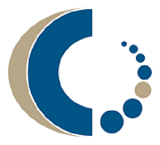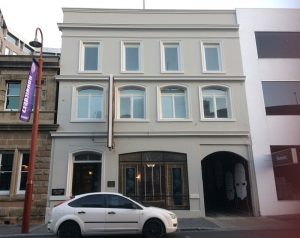
Balance Disorder Treatment
The Tasmanian Balance Clinic
How are Balance Disorders Treated?
Balance disorders treatment aims to treat the underlying cause and to suppress the symptoms. Treatment options are multidisciplinary and may include physical, medical, rehabilitative, and surgical interventions or a combination. These options are provided by specialist doctors, audiologists, and physical therapists. Working through all the options is important to reach the best outcomes for patients experiencing the range of balance disorder symptoms.
Determining the aetiology of a balance disorder and identifying the obvious and less obvious symptoms is vital before management options are considered. A thorough medical assessment by a specialist doctor ensures that all relevant physical or diagnostic information is gathered.
Studies show clearly that advancements in technology and a deep understanding of ear pathophysiology is greatly improving the success of balance disorders treatment. There is now strong evidence for the inclusion of medication, exercise and home care alongside the more common surgical approach.
Assessment of Balance Disorders
Your specialist doctor will consider the following:
- Your age. Children and adult balance disorders are not the same. Children may outgrow some balance disorders without a need for treatment. If diagnosed at infancy, by the time they celebrate their fifth birthday, the diseases disappear. A good example is BPV, vestibular neuronitis, and labyrinthitis. It is, however, vital during these years that management be provided. Child milestones and development may be negatively affected if the balance disorder is ignored.
- Medical history. Seemingly unrelated life events, accidents, or medical interventions may be involved in your balance disorder. A thorough review beyond your ears and brain will give the specialist doctor a greater insight into where to start your treatment.
- General wellness. Are you well? For instance, dizziness may be due to low blood pressure or anaemia (low blood iron). Some simple blood tests may be ordered.
- Your Lifestyle. This part of the assessment can be uncomfortable for some people. You may be asked about how you live and how you spend your time. Please answer as openly and honestly as you can. There may be an aspect of your life that is unknowingly affecting your balance. For example, stress from unemployment.
- The Symptoms. There will be many questions about your symptoms. When did they start? How severe? Do your symptoms change? And many more
Treatment of Balance Disorders
Generally, balance disorder treatment focuses on suppression or resolution of a vestibular condition. Interventions can be used in singles or in combination. They may include:
- Balance retraining exercises
- At Home Program
- Repositioning
- Medical
- Diet and Lifestyle
- Counselling and Education
- Surgery
Balance Retraining Exercises (Vestibular Rehabilitation )
Goals of Vestibular Rehabilitation
- Customized exercise program by specialist audiologist
- Promotes the central nervous system natural imbalance compensation process
- Helps the brain recognize information from muscles, joints, and eyes
- Eliminates problematic symptoms of the particular disorder
- Assists increase in physical activity
- Boosts balance reducing the risks of falls
Exercise program Outline
- Gaze stabilization Exercises. It targets the Vestibular Ocular Reflex (VOR). The patient needs to perform some head movements while focusing on a certain target. The specialist audiologist monitors the focus, accuracy, and speed.
- Habitual Exercises. The exercises aim to reduce the negative responses by exposure to the stimuli. For instance, a patient who feels dizzy while in motion, is subjected to actions that stimulate the dizziness, and progression is monitored.
- Substitution Exercises. Here, you control the eye and head movements to reduce the effects of the balance problems. Mastering these skills require repetitive exercise.
- Balance, strength, and Conditioning Exercise. When experiencing symptoms from the general vestibular hypofunction, these exercises, with the help of a physical therapist helps to strengthen muscles.
Developing a balance disorder can be frustrating and frightening.
Understanding the issue can help to ease the emotional reactions to the problem.
At Home Program
Home exercises help ease symptoms. Your audiologist and physical therapist educates you on the appropriate vestibular therapy you can do alone or with a visiting therapist.
Focusing on balance, strength, and general fitness helps you to improve progressively. Once you identify the movements provoking symptoms, you need to repeat them often to retrain how your brain responds. The exercise may reduce symptoms when done repeatedly, at least twice a day.
Home-based exercise, the Brandt-Daroff exercise, involves the following steps:
- Make sure you are in an upright seated position
- Move in a lying position on one side and ensure your nose is at 45 degrees angle
- Repeat with your other side
At Home Program Warning:
If you notice the following, stop the exercise and seek medical attention.
- Ear ringing continuously
- Ears fluid discharge
- Increased ear discomfort and pressure
- Fluctuation in hearing
- Extreme pain in the ear and neck
Canalith Repositioning Procedures (CRP)
CPR procedures /maneuvers help in the management of Benign Paroxysmal Positional Vertigo (BPPV), which is a type of vertigo that results from the detachment of otoconia from the utricle. Since the otoconia collect in semicircular canals, repositioning helps to move it back to the utricle, and thus reducing vestibular symptoms. Canalith repositioning maneuvers include:
- Epley maneuver. Helps migrate the Otoconia
- Semont maneuver or liberatory maneuver. Applicable when the otoconia is free-floating or attached to the posterior semicircular canal
- Lempert and Gufoni maneuver. Targets the lateral semicircular canal
Medical Management of Balance Disorders
Your initial assessment may have identified an underlying medical condition. You may have a fungal or bacterial infection of your ear canal. If so, your balance disorders treatment will include antifungal or antibiotic medications to help cure ear infections that cause balance disorders. You may have other symptoms like nausea, pain, or discomfort. Medical attention may assist. A review of your conditions after medication use is recommended.
Lifestyle and Diet Change
You may ease some symptoms the moment you decide to change the way you eat and your routine activities. Start with small changes to see what makes a difference to you. Some of the changes in lifestyle include:
- Quitting smoking, alcohol, and nicotine related products
- Exercising frequently
- Eating a well-balanced diet
- Avoiding high levels of salt intake
- Limiting caffeine intake
- Drinking adequate fluids
Counseling and Patient Education for Balance Disorders
Developing a balance disorder can be frustrating and frightening. Understanding the issue can help to ease the emotional reactions to the problem. Counseling and education on aspects relating to causes, diagnosis, and management are generally good starting points. Health literacy helps patients make decisions, adjust their focus, reduce stress and depression as well as help them to participate fully in the balance disorders treatment procedures.
Surgery
It is only an alternative when the medical management and all the other therapies aimed at fixing the inner ear fail to work. Cases of Meniere’s disease or acoustic neuroma will require surgery.
Treatment options vary from one person to another. Before commencing, seek a specialist doctor intervention so that they examine and know the best approach for you. Treatment options may include Exercise Programs, At Home Care or Medication. Surgery may be required if alternate methods are ineffective or in certain specific cases. Research is trying to examine and develop new methods and improvements in balance disorders treatment.
Call now on (03) 6223 5444 to make an appointment at the Tasmanian Balance Clinic.
How to get help
Tasmanian Centre for Hearing
158 Collins Street
Hobart 7000
ph (03) 62235444
